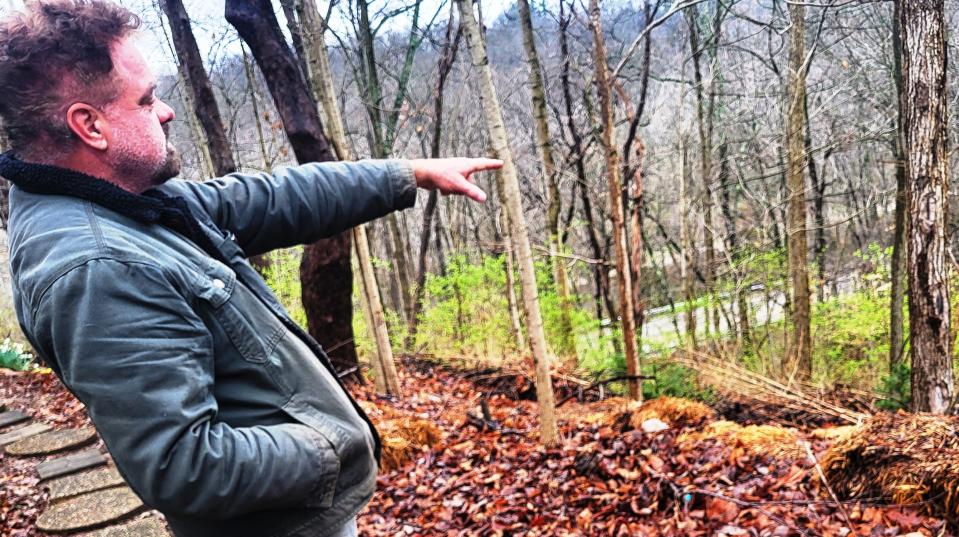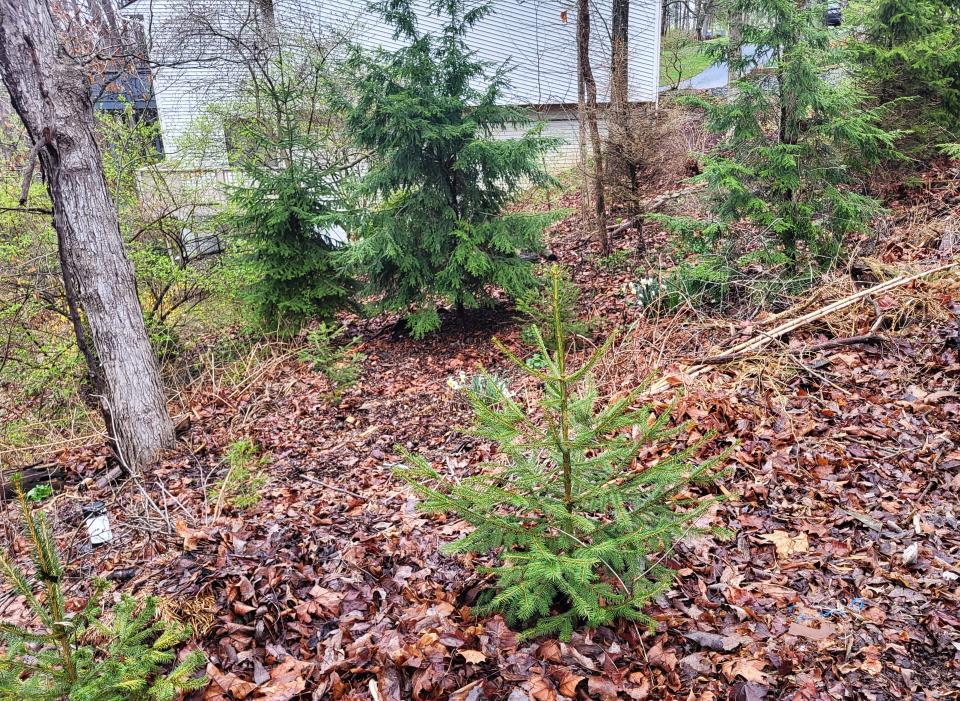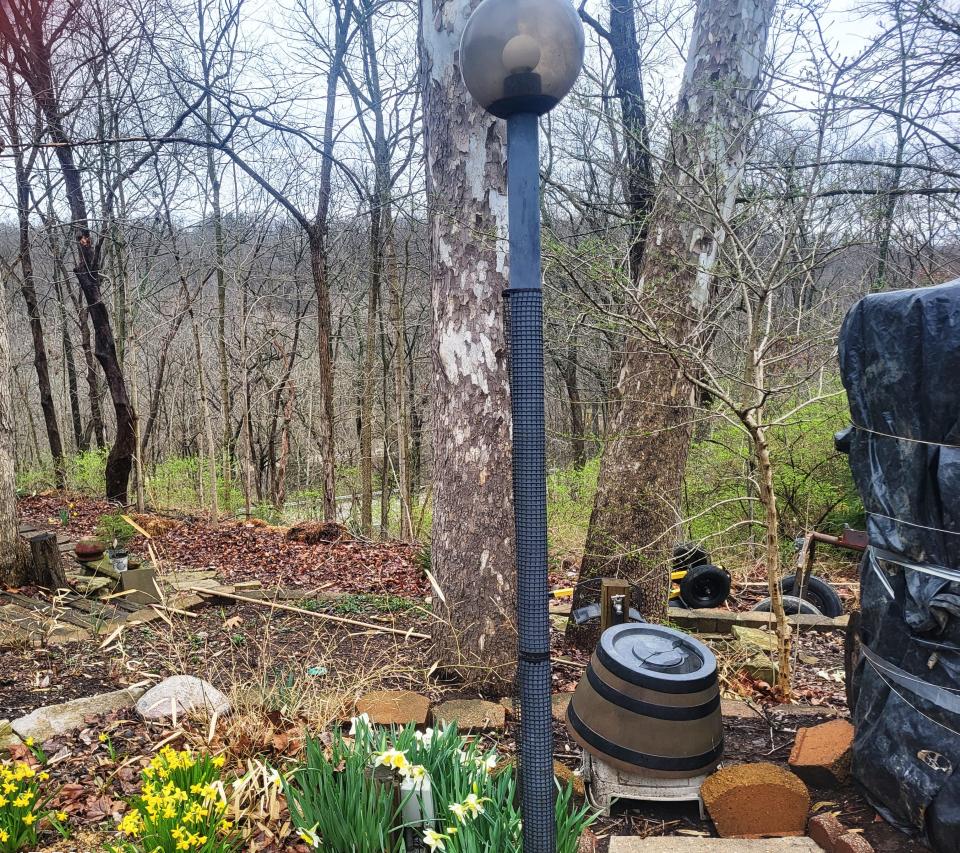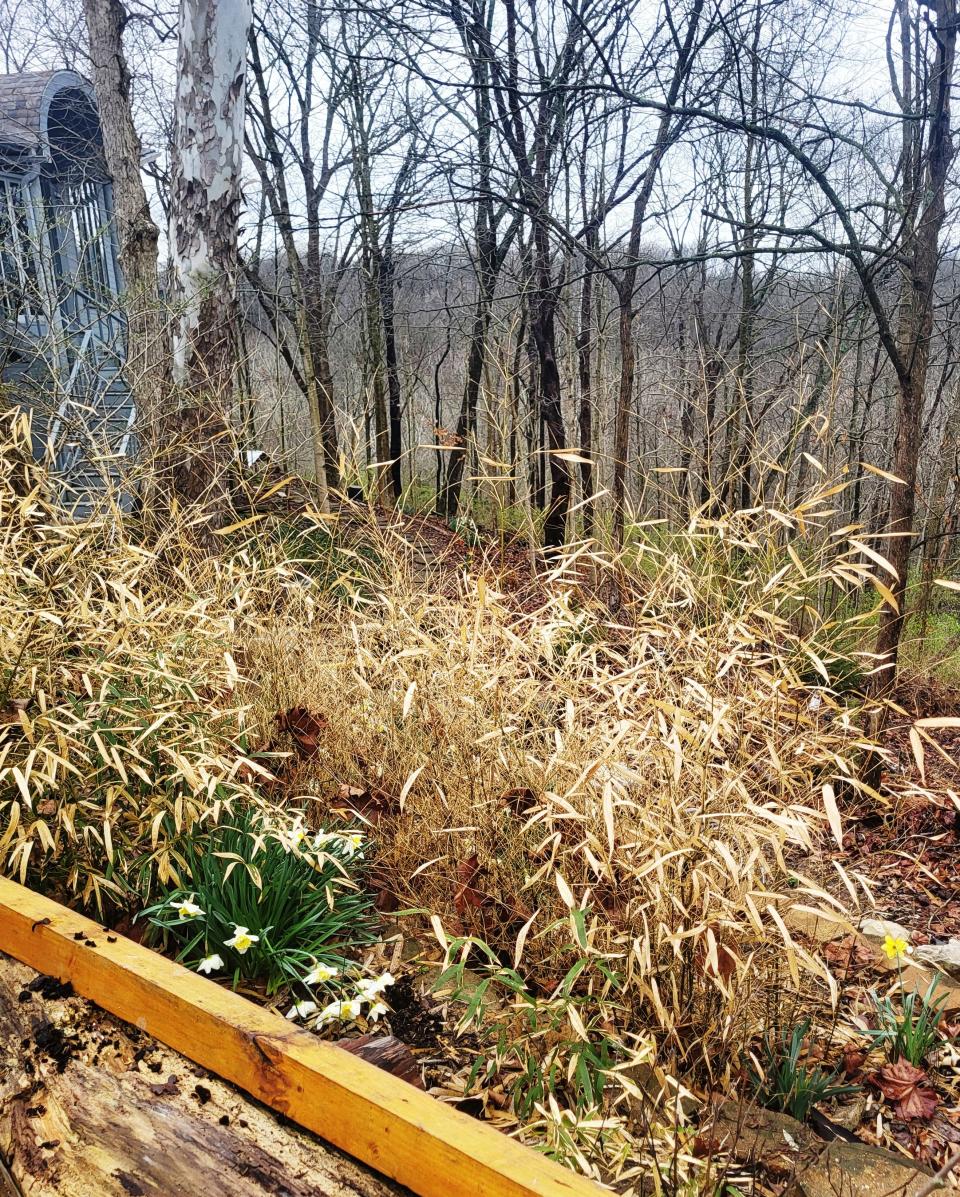What is hügelkulture and how can you integrate it into your landscape?
‘Everything that can be recycled is recycled.’
— Jim Ferguson, produce farmer and permaculturist

I pride myself on being resourceful; most gardeners do. If, during landscaping pursuits, I find a rock, some dated relic, even a volunteer that’s seeded from who knows where, I strive to find a place for it in the new setting. Gardens are great for blending old and new.
In my mind, landscaping has become too closely aligned with planned obsolescence and big business: Throw ‘em out; get new. College towns are rife for this. Even as future leaders, many college students don’t seem to accept civic responsibility in clearing out before their next squatting-place. Thus, at semester’s end we experience their junk, sofas and foodstuffs strewing our streets, detracting from Bloomington’s quintessential charm. Could some entrepreneur step forward and help repurpose all this junk?
As gardeners, we throw out a lot of stuff: logs, limbs, stumps, discarded shrubs and perennials, leaves, debris, kitchen wastes and such, but what if we repurposed those items on our own property, so they don’t become junk? We invariably encounter areas in our gardens that could be built up, and where contours could be improved to facilitate drainage and insulate ourselves from surrounding influences. What if we committed to hügelkulture (pronounced hyoo-gul-kulture)?
Hügelkulture sounds like a mouthful, yet it’s an age-old method of building up earthen mounds, using organic materials. It’s a time-tested method within the permaculture movement that itself strives to integrate human activities with the natural world, lessening our carbon imprint and bringing us in closer harmony with our physical environment. Usually a raised bed to accentuate soil fertility and warming, as well as enhance water retention, hügel mounds can be used to divert runoff and erosion, terrace hillsides and stabilize landscapes.

A big advocate of hügel-building is Jim Ferguson, a local produce farmer and permaculturist whom I met during the Bloomington Garden Club’s Summer Garden Walk in 2018. His and partner James Glazier’s compound in Blue Ridge was on tour behind a Japanese-style fence, where fountains flow freely and plants abound. Various forsythias were in bloom when I met Jim last weekend, and their garden was replete with many treasures I remember from six years ago.
Departing from normal parlance

Jim explains that he employs hügelkulture differently from the classic sense in that he built up the sheer cliff along the eastern side of his lot in Blue Ridge to stabilize the steep precipice and slow down erosion. He uses a duke’s mixture of materials on hand to reinforce and hold the bank: logs, limbs, straw bales, leaves and bamboo branches in a bed he built, using modular blocks, after purchasing their property two decades ago. He typically sheaths subtropical hardy banana trees, figs and pomegranates with a combination of straw and leaves, and wraps them in black plastic over winter to create “solar comforters,” then dismantles them in spring. Much of this material goes into shoring up their hillside. He has planted starter evergreen trees at the top of his mounds, but because of prominent shade and routinely adding to his “hügel-wall,” he doesn’t plant much more, occasionally spreading mushroom spawn to encourage mushroom growth. Wildlife thrives in this naturalistic haven, he says.
Mound-building for agriculture is believed to have been practiced for centuries in Germany and Eastern Europe. Jim reminded me that terrace-gardening has long been practiced in Asia and South America. Yet, hügelkulture has risen as a concept and practice only in modern times, first by a German in 1962, intrigued by the diversity of plants growing among woody debris in his grandmother’s garden, then later by an Austrian who defied authorities, incorporating the practice into his inherited mountain farm. In German, hügel is a little hill or hillock, a mound, so hügelkulture is the practice of building those mounds, using what’s available, enhancing growability and adding dimension to one’s landscape.

Building with finesse
Like most things horticultural, art and science merge in building a hügel. While woody and vegetative biomass eventually breaks down, it’s a slow, gradual process. Obviously, heftier logs and branches should be lain at the bottom of these creations. But because late-winter and spring rains can wash out new constructions, it’s best to cross-hatch materials at lower levels, and lay branches at oblique angles to slow down rain-water gush. At that point, it’s like a physics equation.
Because biodegradable materials break down over time, installing larger trees and shrubs within these creations is usually discouraged until later, after the materials have broken down and developed nutritious soil. Yet, plants can be planted outside these mounds initially, enabling new plantings to profit from resulting drainage.
With time, as materials break down, hügels sink down, perhaps after 5-6 years. But the enriched spot becomes ideal for future plantings. In early years, hügels can be planted with more demanding crops such as zucchini, pumpkins, cucumbers, cabbages, tomatoes, corn, celery and potatoes. Basically, moisture-loving plants such as rhubarb and asparagus work well at the base, while drought-tolerant herbs and sedums enjoy drier realms above.
Visiting with Jim is always a pleasure. A bundle of quick-witted, soft-spoken energy and knowledge, I remember him from former farmer’s markets when he vended his produce. Nowadays, output from Ferguson Valley Farm near Bloomfield is available online and at Rose Hill Farm Stop. It’s great to commune with fellow green-thumbs!
Landscape designer Bob Baird can be reached at bbaird@alumni.iu.edu.
This article originally appeared on The Herald-Times: How one Bloomington man is stabilizing his land using hügelkulture

